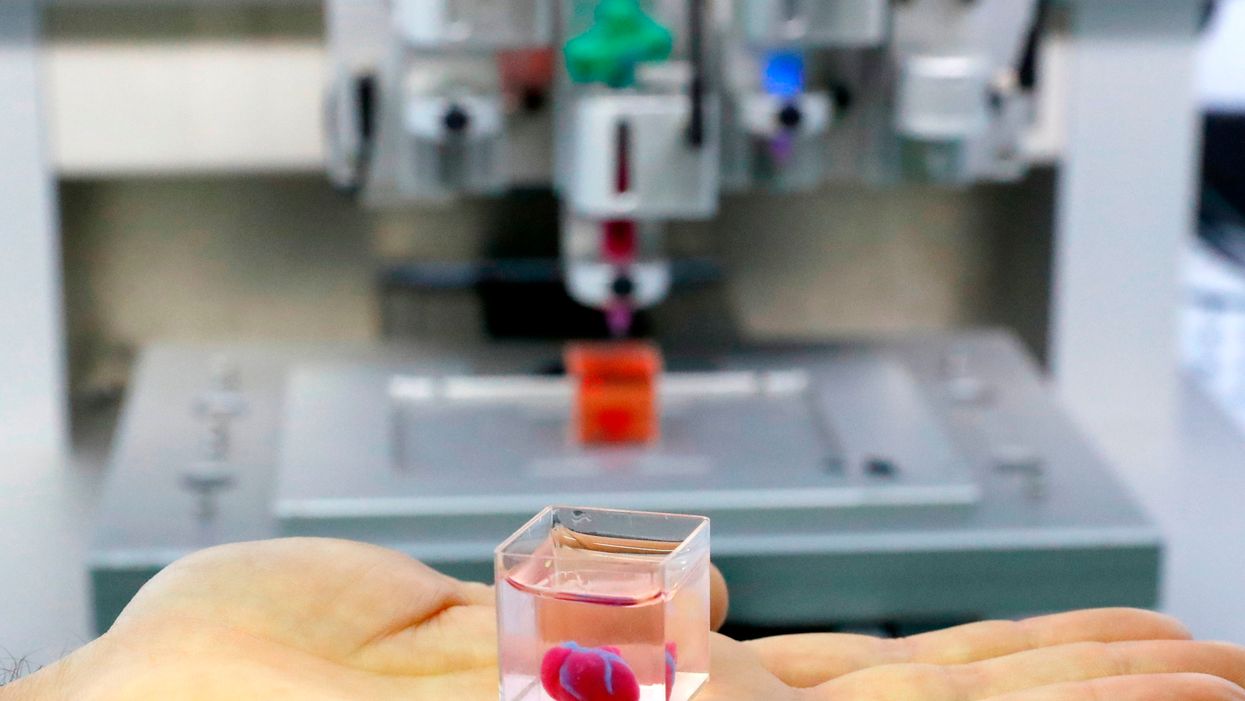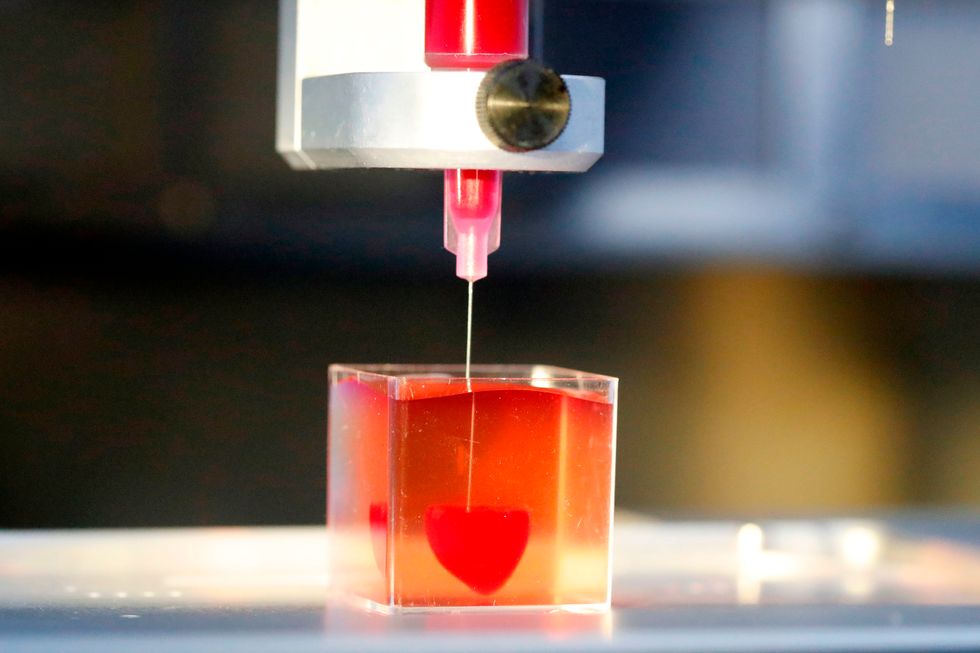
Jack Guez/AFP/Getty Images

The tiny heart has blood vessels, ventricles, and chambers
A team of Israeli scientists on Monday unveiled the first-ever 3D-printed human heart, the Jerusalem Post reported.
Researchers at Tel Aviv University printed the tiny vascularized heart in about three hours using cells and biological material from a patient.
"This is the first time anyone anywhere has successfully engineered and printed an entire heart replete with cells, blood vessels, ventricles and chambers," lead researcher Tal Dvir of the TAU School of Molecular Cell Biology and Biotechnology said in a release. "People have managed to 3D-print the structure of a heart in the past, but not with cells or with blood vessels.
"This heart is made from human cells and patient-specific biological materials. In our process, these materials serve as the bio-inks, substances made of sugars and proteins that can be used for 3-D printing of complex tissue models," Dvir said. "It's completely biocompatible and matches the patient."
While the 2.5 centimeter-sized heart is too small for a human, the researchers believe it puts them a step closer to creating personalized organs for those in need of a transplant. Personalized organs would be more easily accepted by the body.
"The method we have developed will allow us in the future to print a heart of any size required from the human tissue of patients themselves, meaning that the body will not reject it," Dvir said. "In fact, this method allows us to print any organ that is required for a transplant and we believe that this method opens the door to future technologies, which will make the need for organ donors completely unnecessary."
The researchers took a fatty tissue biopsy from a patient and separated the cellular and noncellular materials, according to the study.
Then the cells were reprogrammed to become pluripotent stem cells, the extracellular matrix that was processed into a personalized hydrogel that served as the ink for the printer that printed the heart.

The hearts need to learn how to beat and pump like human hearts before they can be tested on animals and eventually in humans.
Printing a human heart would require billions of cells and could take a full day to print, Dvir said, according to the Post.
Dvir hopes that within the next decade "there will be organ printers in the finest hospitals around the world, and these procedures will be conducted routinely."